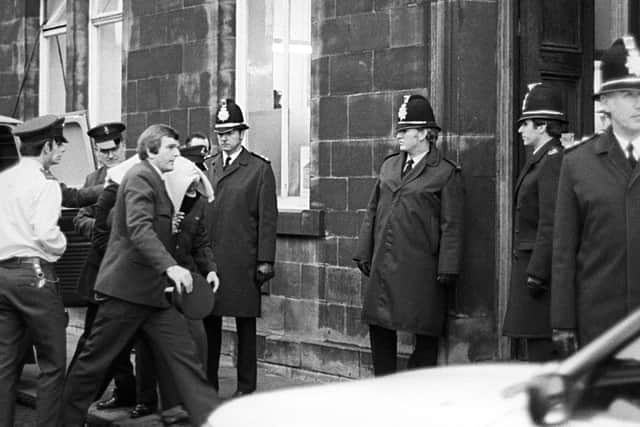Wearside Jack: Hoaxer who helped Yorkshire Ripper from 100 miles away
In one of criminal history’s cruellest hoaxes, John Humble tricked police into believing the serial killer was Wearside Jack, a man with a gruff Sunderland accent.
That was despite women who survived Peter Sutcliffe’s attacks saying he sounded like a local.
Advertisement
Hide AdAdvertisement
Hide AdHumble, for reasons he never fully explained, delighted in taunting the press and detectives with letters and an infamous tape, anonymously claiming he was the killer who was terrifying northern England in the late 1970s.


He sent it to assistant chief constable George Oldfield in 1979, saying: “I’m Jack.
“I have the greatest respect for you, George, but Lord, you’re no nearer catching me now than four years ago when I started.”
The ruse hijacked the already-cumbersome police inquiry and diverted resources from the streets of Yorkshire and the North West to Wearside.
Advertisement
Hide AdAdvertisement
Hide AdThe vast sum of £1 million was spent on adverts to try to help find Wearside Jack.
Dialect experts analysed the recordings and identified the exact area of Sunderland the suspect could be from, leading to 40,000 men in the North East being investigated.
The tape and letters convinced officers because they included details which police, wrongly, believed had never been made public.
Though Sutcliffe had been questioned by police, his handwriting did not match that in the hoaxer’s letters.
Advertisement
Hide AdAdvertisement
Hide AdAfter Humble torpedoed the police inquiry, Sutcliffe killed three more women before he was caught by two officers in a red light area of Sheffield in January 1981.
It later transpired Humble had anonymously tried to tell police they had been hoaxed, but the confession was lost among many other similar claims.
In the following months and years he tried to kill himself, once jumping from a bridge over the Wear.
He became an alcoholic and remained undetected until a cold case review in 2005 matched DNA from saliva on an envelope to a sample he gave following an arrest for being drunk and disorderly.
Advertisement
Hide AdAdvertisement
Hide AdHumble was so intoxicated when he was arrested, then aged 50, that police had to wait a day for him to sober up.
He was jailed in 2006 for eight years for perverting the course of justice and drank himself to death in 2019.
It emerged that Humble had a grudge against police as a youth and an interest in the Jack the Ripper story.
But he had felt guilt when the Ripper continued to kill after the tape arrived, telling police: “I blamed myself for it. That’s why I phoned in.
“They took no notice and another two got killed.”
Advertisement
Hide AdAdvertisement
Hide AdDuring Humble’s case, it emerged that Sutcliffe had told police how the Wearside Jack hoax had helped him.
The killer said: “While ever that was going on, I felt safe.
“I’m not a Geordie. I was born at Shipley.”